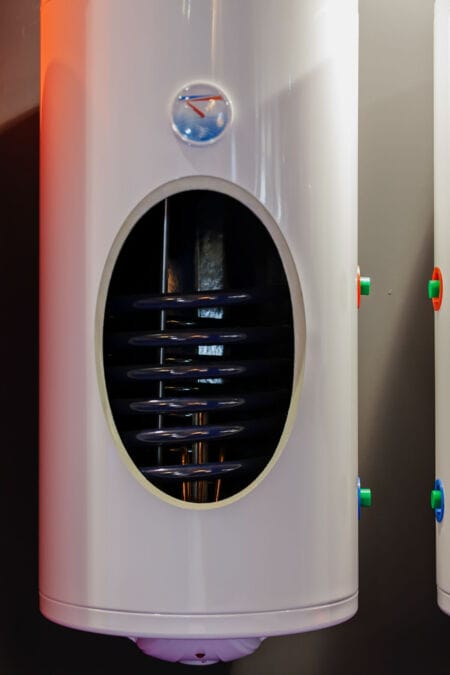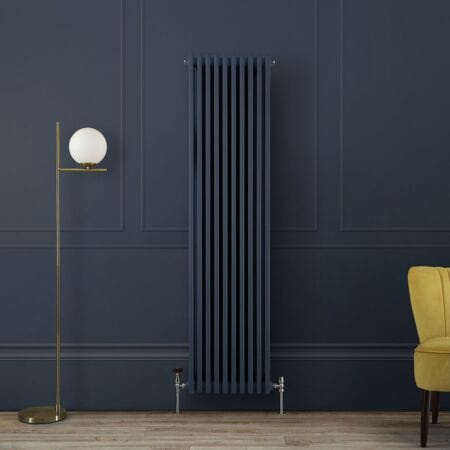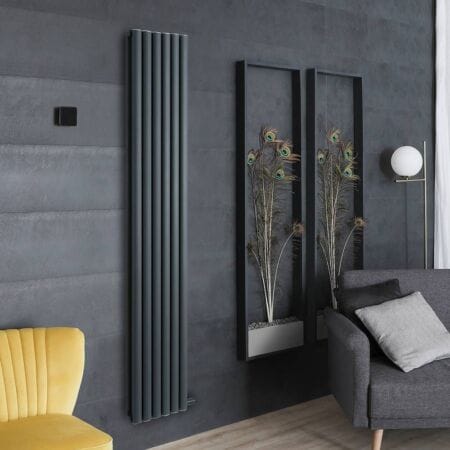Contents
ToggleWhat we'll cover...
A range of clever insulation hacks to improve your home’s heat retention capabilities without disruption.
Key tips for heat loss prevention
Ideally, we all want a warm, energy efficient home that doesn’t come with scaffolding, dust sheets, or three months of builders drinking your tea. But is it possible to insulate your home without major renovation work?
In short, the good news is that you don’t need to gut your house or embark on a renovation marathon to improve insulation.
In fact, many insulation issues can be tackled with some clever, cost-effective hacks that you can complete over the course of a weekend. No planning permission. No structural upheaval. Just sensible steps to stop heat escaping and cold creeping in.
So, grab a brew (and maybe your toolbox), because in this guide we’ll walk you through the best ways for insulating your home without major renovation. And maybe throw in a few product tips, room-by-room fixes, and a fair few cosy upgrades you might not have otherwise thought of.

Why bother with insulation?
Before we get stuck into the how, let’s quickly remind ourselves of the why to bother with insulation.
- Save on energy bills – The less heat that escapes, the less heating you’ll need. Insulation cuts your energy consumption and the need for the constant operation of home radiators, plain and simple. So you can enjoy lower energy bills as a result.
- Boost comfort – Say goodbye to cold spots, draughts, and the painful decision of whether to drag yourself out of bed in the morning.
- Lower your carbon footprint – More efficiency means less emissions. Good for the planet and your conscience.
- Make your boiler’s life easier – Less demand on your heating system = longer lifespan. It’s a win-win. Furthermore, the addition of smart heating controls can alleviate extra stress on your boiler too.
Now, let’s get cracking.
1. Block out the breeze: Draught-proofing essentials
Draught-proofing is by far and away the fastest way to make your home warmer without having to lift a floorboard or break the bank.
Where to look:
- Doors – External and internal. If you can see daylight around the frame, it means heat is being allowed to escape.
- Windows – Especially single-glazed or ageing uPVC units. An upgrade to double glazing is highly recommended where possible as well.
- Skirting boards and floorboards – Tiny gaps can add up to a huge escape route for warm air.
- Loft hatches – A seriously underrated culprit of heat loss in UK households.
- Pipes and vents – Gaps where pipework enters the walls or extractor fans exit the house.
What to use:
- Self-adhesive foam strips – For quick fixed on windows and door frames.
- Silicone sealant – Perfect for sealing gaps around skirting and floorboards.
- Brush strips – Install beneath doors to prevent cold air from sneaking in.
- Letterbox draught excluders – Fit a brush or spring-loaded flap to stop icy gusts from getting in.
- Keyhole covers – The detail people forget, but they can make a significant difference!
Top tip: Walk around your house on a windy day with a lit incense stick or candle (carefully!). Watch the smoke to see where draughts are coming in.
2. Window wizardry: Insulation for all budgets
DIY fixes that work:
- Thermal curtains – Invest in heavy-duty, lined curtains, ideally floor-length, and close them before sunset to trap daytime warmth.
- Blackout blinds – Surprisingly effective at insulation as well as blocking light. Double up with curtains for best results.
- Secondary glazing film – These kits are cheap, easy, and surprisingly effective. Seek out from your local hardware store, and stick it on with double-sided tape, shrink it with a hairdryer, and you’ll have yourself an invisible insulating layer.
- Bubble wrap – Yes, really. Not the most glamorous option, but effective. Stick it to the inside of the window with water and let the air pockets do their thing. Just don’t let the kids know they can ‘pop the window’.
- Window seals – Over time, rubber seals perish. Replace them with new adhesive strips to successfully lock in the heat provided by your designer radiators or heated towel rails.
Bonus move: Fit a pelmet above your curtains to stop warm air circulating behind and escaping.

3. Cosy underfoot: Floor insulation on a budget
Heat rises, but it is possible for it to disappear downwards if your floors are leaky.
Easy wins:
- Rugs and runners – Not solely for style. These add a thermal layer, particularly on tile, wood, or laminate floors that might otherwise provide cool underfoot conditions.
- Thermal underlay – If you’re changing your carpet or laying a rug, upgrade the underlay to an insulating version. Game changer.
- Seal floorboard gaps – You can use flexible fillers or specialist draught-proofing rolls that will squish between the boards and slightly expand upon movement.
- Skirting board sealing – A small bead of decorator’s caulk can halt cold air from slipping through the base of the wall.
Extra tip: Although it will necessitate more disruption than any of the other suggestions in this article realistically, the installation of an electric underfloor heating kit can be relatively fuss-free in the grand scheme of things.
4. Radiator tweaks: Boost heat where you need it
Most people won’t think about radiators when they hear “insulation”, but you’d be surprised how much of their output gets wasted without the right setup.
Simple upgrades:
- Reflective radiator panels – These sit behind your radiators and reflect heat back into the room as opposed to soaking into the wall.
- Smart TRVs – Thermostatic radiator valves let you control the temperature of each radiator. Smart ones can even learn your habits.
- Move the furniture – Make sure heat isn’t being trapped behind settees or wardrobes. Give your radiators room to breathe!
- Bleed the radiators – Cold patches = trapped air = wasted energy. Bleed your radiators regularly and reap the benefits of a full heat output.
One of the most overlooked causes of an inefficient heating system is poorly performing radiators. Take a look at our guide to finding the correct BTU for your room size, and discover a wide range of heating options suitable to enhance your space from an aesthetic and comfort perspective.
You’d never catch us neglecting a radiator – give them a little love!
5. Tackle the loft (but leave the floorboards alone)
Loft insulation is one of the biggest heat-savers in any home. But if yours is already insulated in between the joists, the loft hatch is your next best bet.
Hatch upgrades:
- Insulated loft covers – Attach an insulated cover or box to the hatch’s interior side to stop warm air disappearing upwards.
- Draught strips – In the same way as doors and windows, your loft hatch can benefit from a touch of foam or rubber sealing around the edge.
Climb up there for 15 minutes and you’ll thank yourself when you’re grabbing the Christmas decorations come winter.
6. Plug the chimney
Not every home has a fireplace these days. But if you do and it is unused, it could be sucking warm air out of the room like a giant heat hoover.
How to block it:
- Chimney balloons – Inflatable, reusable, and easy to fit. Just remember not to light a fire while it’s in there…
- Chimney sheep – Manufactured from natural wool, they’re equally as effective and have an odd charm about them.
- Permanent caps – If you won’t use the fireplace again, you can cap your chimney externally. Just make sure there’s still airflow present to prevent damp.
7. Insulating paint, plaster and wallpaper liners
Here’s one for the interiors crew. Believe it or not, you can find paint, plaster, and wallpaper backing all designed to reduce the level of heat loss that transmits through your walls.
Options include:
- Thermal paint – Contains insulating microspheres that create a thermal barrier. Subtle but effective.
- Insulating wallpaper lining – Applied beneath wallpaper or paint, this delivers a padded layer of warmth.
- Insulating plaster – If you’re commencing with a redecoration of the space regardless, it’s well worth considering, especially on external-facing walls.
Won’t make your walls three feet thick – but might stop you from needing to wrap up like you’ve taken a trip to a famed ice bar in January.
8. Don't overlook sockets and switches
If your external walls have plug sockets or light switches, you might feel a cold draught when your hand is placed nearby. That’s heat slipping out.
Fix it using:
- Insulating socket gaskets – Foam backings that sit behind the faceplate.
- Sealant or putty – Seal the edges where the wall and plate meet.
Tiny gaps, big gains.

9. Insulate interior pipes
Finally, don’t forget about hot water pipes, particularly in unheated areas such as lofts or garages.
Use:
- Foam pipe lagging – Wrap around your hot water pipes to prevent heat loss and protect against frozen pipes.
- Insulate the hot water tank – If you have an older tank especially, a jacket or wrap could reduce heat loss by up to a whopping 75%.
The practice will keep water hotter for longer and stop the boiler from overworking.
Comfort without construction with BestHeating advice
You don’t need to start knocking down walls or committing to full-scale, expensive renovations to make your home warmer. With a few strategic fixes – some that can be done in less than an hour – you’ll feel the difference in your comfort, your bills, and even your mood.
So, whether you’re renting, budgeting, or just not up for a three-month stint with dust in your corn flakes, you can still fight back against the cold. Layer up your insulation with smart, quick wins, and watch your home transform into a snug, heat-retaining haven. Follow the hints and tips in our ultimate guide to energy efficient heating for other simplistic ways to stay warm without burning through your budget.
Let us know your favourite heating hacks and insulation tips in the comments below, or reach out to us on Instagram, Facebook or X.
John is a Research Specialist for the Best Heating Advice Centre, where for over nine years he has dedicated himself to demystifying home heating for our customers. He specialises in creating clear, data-driven guides and how-to articles by collaborating directly with our team of certified heating experts and product engineers.
His work, built on a foundation of journalistic research, has helped millions of readers make confident and informed decisions about their home heating. When he’s not breaking down the heat output differentials from radiators to heated towel rails, John fancies himself as a fine football and music connoisseur.






